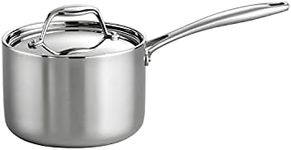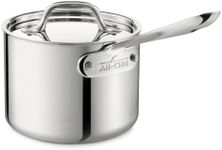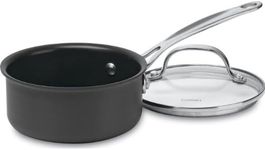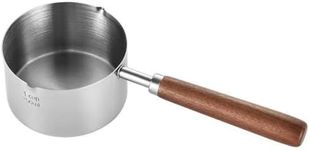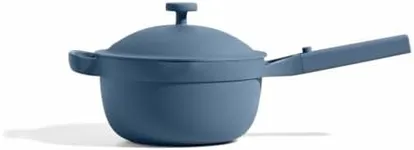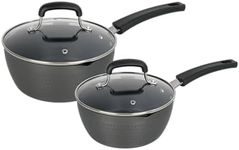Buying Guide for the Best saucepans
Choosing the right saucepan can make a big difference in your cooking experience. Saucepans are versatile kitchen tools used for a variety of tasks, from boiling water to making sauces and soups. When selecting a saucepan, it's important to consider several key specifications to ensure you get the best fit for your cooking needs. Here are the main factors to consider and how to navigate them.MaterialThe material of a saucepan affects its heat conductivity, durability, and ease of cleaning. Common materials include stainless steel, aluminum, copper, and non-stick coatings. Stainless steel is durable and resistant to rust and staining, making it a good all-around choice. Aluminum heats up quickly and evenly but may react with acidic foods. Copper offers excellent heat conductivity but requires more maintenance. Non-stick coatings are great for easy cleanup but may not be as durable. Choose a material based on your cooking habits and maintenance preferences.
SizeSaucepans come in various sizes, typically measured in quarts or liters. The size you need depends on the quantity of food you usually cook. Small saucepans (1-2 quarts) are ideal for single servings or small tasks like melting butter. Medium saucepans (3-4 quarts) are versatile for everyday cooking, such as making sauces or boiling eggs. Large saucepans (5 quarts or more) are suitable for cooking larger quantities, like soups or pasta. Consider your typical cooking volume to choose the right size.
HandleThe handle of a saucepan should be comfortable to grip and stay cool to the touch. Handles can be made from various materials, including stainless steel, plastic, or silicone. Stainless steel handles are durable and oven-safe but may get hot. Plastic and silicone handles stay cooler but may not be oven-safe. Look for handles that are securely attached with rivets for added stability. Choose a handle based on your comfort and whether you plan to use the saucepan in the oven.
LidA good lid helps retain heat and moisture while cooking. Lids can be made from glass or metal. Glass lids allow you to monitor your cooking without lifting the lid, but they can be more fragile. Metal lids are more durable but require you to lift the lid to check on your food. Some lids have steam vents to prevent boiling over. Consider whether you prefer to see your food while it cooks and if you need a vented lid.
WeightThe weight of a saucepan can affect its ease of use. Heavier saucepans tend to be more durable and provide even heat distribution, but they can be harder to handle, especially when full. Lighter saucepans are easier to maneuver but may not distribute heat as evenly. Consider your strength and comfort level when choosing the weight of your saucepan.
Compatibility with CooktopsNot all saucepans are compatible with every type of cooktop. If you have an induction cooktop, you'll need a saucepan with a magnetic base. Most stainless steel and cast iron saucepans are induction-compatible, while aluminum and copper may not be unless they have a special base. Ensure the saucepan you choose is suitable for your cooktop type to avoid any issues.
